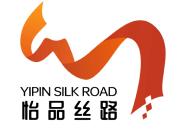
Recently, the Food and Agriculture Organization of the United Nations released the "State of Food and Agriculture 2024" report, stating that the global agricultural food system must undergo a transformation to achieve sustainable development goals and ensure that everyone has access to healthy and nutritious food, and that everyone can play a role in the transformation. On issues such as the direction of transformation, the role of trade and supply chain, the reporter interviewed Andrea Catanio, a senior economist at the Food and Agriculture Organization of the United Nations and one of the authors of the report.
Reporter: The recent report "The State of Food and Agriculture 2024" released by the Food and Agriculture Organization of the United Nations mentions the need to leverage agricultural enterprises to promote the transformation of the food supply chain. What role do you think trade plays in the food supply chain, and how can we better leverage agricultural enterprises to achieve sustainable and inclusive international agricultural trade?
Catanio: As mentioned in "The State of Food and Agriculture 2024", all agricultural enterprises in the supply chain have commercial leverage over their upstream enterprises, and the size of this leverage depends on the specific size of the enterprise and market forces. For example, a major supplier can influence the compliance of secondary suppliers with sustainable principles. The demand of consumers for healthier food, sustainability standards, and fair production practices are important forces driving the transformation of agricultural enterprises.
Overall, as consumers, retailers, and wholesalers in importing countries adopt standards that enable agricultural production, value chain ecology, and social sustainability, trade will play an important role in driving industrial transformation. For example, some forward thinking agricultural enterprises will strive for competitive advantages by predicting policy norms and other measures.
Reporter: The report mentioned that although large farms have a small number, they dominate in terms of total land area and output. These large farms are therefore more likely to occupy a larger share in international agricultural trade, and may even cause damage to the interests of less industrialized farms, affecting employment and product diversity. From the perspective of the Food and Agriculture Organization, how can we avoid this risk?
Catanio: The key to addressing this issue is to provide a fair environment where all farms, regardless of their size, can benefit from trade opportunities. Specific measures should be tailored to local conditions: for example, in some places, this means increasing investment in public infrastructure; In other places, this may mean providing more agricultural extension services to small farmers to help them better align with export standards; In some cases, it means accelerating the development of enterprise cooperation, so that small farmers can also have a critical scale to participate in the export market.
Reporter: Currently, technology and investment are playing a key role in the development of the agricultural industry and running through the entire chain of agricultural production. How do you view the technological and financial gap between developed and developing countries, and what good suggestions do you have to bridge this gap?
Catanio: As an important concept, yield gap refers to the difference between actual and achievable yields, which is often used to evaluate the potential and opportunities for agricultural yield increase. In the calculation of yield differences, the main staple crops such as corn, rice, and wheat are basically selected. For example, research has found that in Europe, grain production accounts for 30% to 90% of achievable yield, and this figure is even lower in developing countries. The key to increasing actual yield and reducing yield differences often lies in nutritional management, seed quality, and fertilizer management. Value chain development is the area where the technological and financial gap between developed and developing countries is most evident. Agricultural enterprises require high-quality infrastructure, such as roads and cold storage facilities, and logistics level is also of great significance in reducing losses.
Reporter: The concept of supply chain plays an important role in the report 'The State of Food and Agriculture 2024'. Due to their unique properties, disturbances in the supply chain of agricultural products will pose significant risks to global food security. What measures do you think can be taken to protect the stability of the agricultural supply chain in the current environment of geopolitical tension and increased policy uncertainty?
Catanio: The world is facing increasingly frequent shocks, many of which are unpredictable and intensifying. These impacts pose a threat to agricultural production and other critical links in the agricultural food system. Facing multiple risks and uncertainties, increasing the diversity of food sources is crucial for enhancing resilience, which is the main manifestation of resilience.
An important way to increase diversity is through international trade. A supply chain that imports from more sources and exports to multiple destinations often exhibits less vulnerability in the face of domestic and spillover international shocks.
In addition, by engaging in trade, countries will also be more exposed to external shocks, especially policy shocks such as trade restrictions imposed by other countries. To address this tension and risk, it is possible to diversify domestic production and trade partners, establish an agricultural trade network with more countries participating and greater differentiation in socio-economic and climate characteristics, and buffer the impact risks of specific countries and regions.
For the value chain, building a strong and transparent network is crucial, as it plays a fundamental role in the resilience of the agricultural food system and ensures the accessibility of food at all levels. When critical transportation routes are disrupted and cannot be used, food detour trade will greatly affect their accessibility and increase transportation losses. This means that developing and upgrading infrastructure and services such as roads and refrigeration is crucial for enhancing the resilience of the agricultural food system.
From the perspective of consumers, inclusive poverty reduction policies and risk management measures will help prevent shocks from preventing consumers from accessing healthy diets. Similarly, social security programs will help alleviate the problem of declining demand in a challenging environment.


 Back
Back